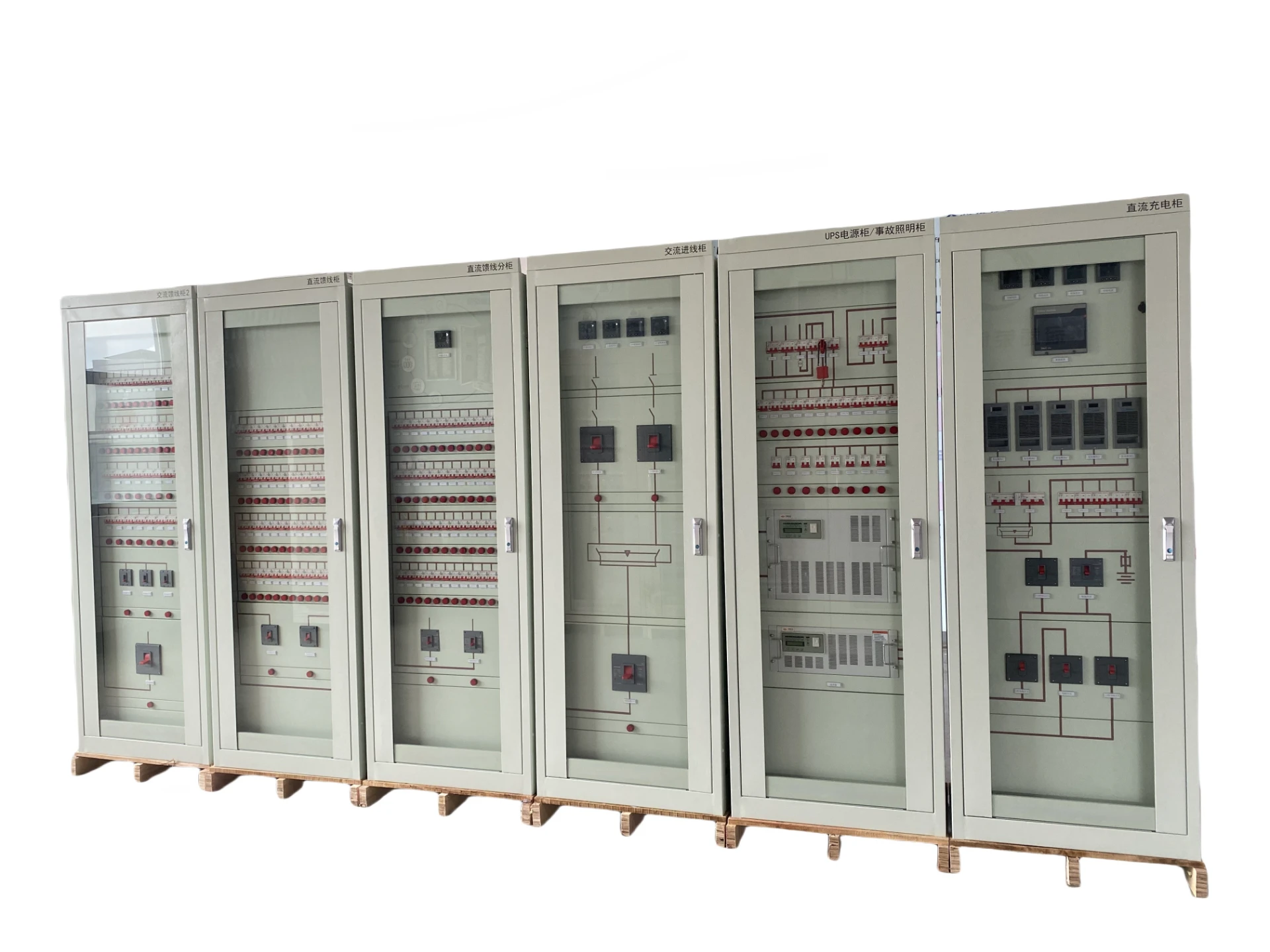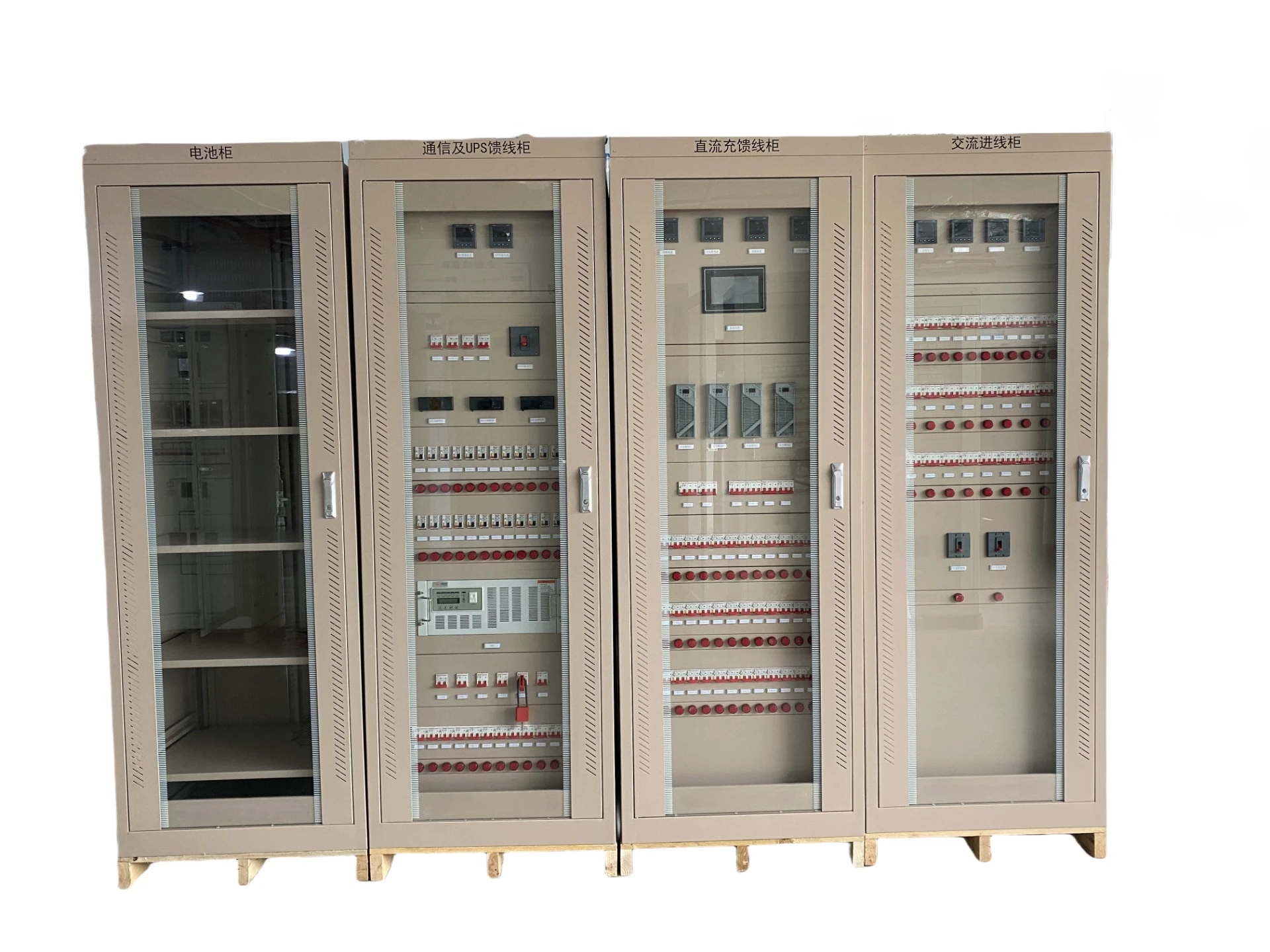
aug . 03, 2025 02:00 Back to list
Intelligent Energy Management with GPT-4 Turbo AI Optimization
The ongoing global shift toward decarbonized grids and distributed energy underscores the transformative role of intelligent energy management (IEM) systems. As industrial, commercial, and residential environments aggressively seek smarter, data-driven solutions to reduce costs, enhance reliability, and meet sustainability targets, IEM is rapidly evolving from a value-add to an indispensable core technology.
1. Market Overview & Key Trends in Intelligent Energy Management
According to MarketsandMarkets, the global intelligent energy management systems market size is projected to reach USD 47.2 billion by 2028 (CAGR ~18.4%, 2023-2028). Factors driving growth include the rise of decentralized renewable generation, proliferation of electric vehicles, advanced metering infrastructure, and grid-edge digitalization.

- Integration with home energy storage systems & microgrids for residential and industrial prosumers.
- AI-based optimization for demand forecasting, dynamic pricing, and peak shaving.
- Secure remote management & predictive analytics for grid asset maintenance.
- Conformance with international standards: ISO 50001 (energy management), IEC 61970/61968 (EMS interfaces), ANSI C37.2 (switchgear/device identification).

Typical Applications:
- Industrial manufacturing: Real-time monitoring, asset load balancing.
- Smart buildings & data centers: HVAC scheduling, energy cost reduction.
- Utilities & microgrids: Automated demand response, distributed generation.
- Integration with home energy storage system for residential energy independence.
Key Performance Parameters Overview
| Parameter | Typical Value/Range | Relevant Standard |
|---|---|---|
| Monitoring Resolution | Up to 1 sec/sampling | IEC 62053 |
| Communications | Ethernet, RS485, GPRS, WiFi | IEC 61850, Modbus |
| Control Algorithm | AI/ML-based, Rule-based | ISO 50001, IEC 61970 |
| Demand Response | Realtime, Scheduled, Predictive | OpenADR 2.0 |
| Interoperability | Open API, Protocol Adapters | IEC 61968, IEEE 2030.5 |
| Accuracy (Metering) | Class 0.2S ~ 1.0 | IEC 62052-11 |
| Cybersecurity | SSL/TLS, User Role Management | IEC 62443 |
2. Technical Structure and System Architecture
Intelligent energy management system (IEMS) typically comprises:
- Field sensors/meters (data acquisition, PQ monitoring, flow/temperature meters)
- Edge controller/gateway (local logic & device interface; usually ARM/Intel-based, 2GB+ RAM, PLC/RTU compliant)
- Central processing module (AI/ML algorithms, real-time database, event engine)
- User interaction dashboard (web/mobile HMI, REST API, reports)
- Integration with home energy storage system for behind-the-meter DERs
Typical Transition Diagram - Energy Flow in IEM
Input
→ sensors, energy meters
(Current/voltage, flow)
→ sensors, energy meters
(Current/voltage, flow)
Edge Processing
→ Data filtering, anomaly detection
(Local PLC/RTU)
→ Data filtering, anomaly detection
(Local PLC/RTU)
Central Analysis
→ AI-based optimization
(Forecast, scheduling)
→ AI-based optimization
(Forecast, scheduling)
Command/Actuation
→ Load shedding, DR, battery control
(Home/off-grid/industrial)
→ Load shedding, DR, battery control
(Home/off-grid/industrial)
Feedback & Visualization
→ Reports, alarms, dashboards
→ Reports, alarms, dashboards
For advanced industrial IIMS, multi-protocol gateways comply with IEC 61850/IEC 60870, ensuring seamless integration from substation to cloud. All critical process and asset data is recorded and analyzed for root cause analysis per ISO 50001 guidelines.
3. Product Highlight: Intelligent integrated power supply

Cutting-edge Integrated Design
The Intelligent integrated power supply offers a next-gen solution for reliable, high-efficiency power, merging intelligent energy management and home energy storage system functionality.
Core Attributes:
Core Attributes:
- Input Range: 85–305V AC (Wide adaptability for global grids)
- Available Output: DC24V/12V/48V, Max power up to 10 kW
- Material: Aircraft-grade aluminum chassis, corrosion-resistant, IP54/IP65 enclosure
- Core Processing: ARM Cortex-A53/Quad core, real-time energy analytics
- Manufacturing Process: Precision aluminum casting, CNC-milled heatsinks, SMT electronics, robotic wiring
- Certifications: IEC/EN 61010, ISO 9001, CE, RoHS, UL, ISO 50001 (EMS integration)
- Service Life: 50,000+ hours, 5~15 years design
- Application Industry: Petrochemical, Metallurgy, Water treatment, Smart Grid, Data Center
- Special Features: High surge immunity, remote firmware update, modular redundancy (N+1)
Manufacturing Process Visualization
▲ Schematic: Aircraft-grade aluminum is casted → CNC machining ensures precision fit → SMT & PCBA for electronic assembly → Robotic wiring for uniformity → Final ISO/CE/ANSI test guarantees global compliance.
Specification Table: Intelligent integrated power supply vs. Leading Brands
| Technical Parameter | Intelligent Integrated Power Supply | Brand X | Brand Y |
|---|---|---|---|
| Input Voltage | 85–305V AC | 90–264V AC | 100–240V AC |
| Max Output Power | 10 kW | 6.5 kW | 8 kW |
| Conversion Efficiency | 96.7% | 94.3% | 95.2% |
| Operating Temp. | -20~+60℃ | -10~+50℃ | -15~+55℃ |
| Enclosure | IP54/IP65, Aluminum | IP21, Sheet Metal | IP54, ABS Plastics |
| Smart EMS | Full; AI-enabled | Partial | Rule-based |
| Warranty | 5~10 years | 3~5 years | 4~7 years |
| Certifications | IEC/EN 61010, UL, CE, ISO 50001 | CE, CB | UL, RoHS |
| Self-diagnosis | Auto; via App & Cloud | Basic LED | On-unit Display |
4. Technical Data Visualization
Typical System Efficiency (%)
Warranty/Service Year Comparison
Data Source: ACDC BESS Lab Internal Test (2023), Manufacturer technical data.
Note: Real-world conditions may affect results. Consult manufacturer for application-specific sizing.
Note: Real-world conditions may affect results. Consult manufacturer for application-specific sizing.
5. Custom Solutions and Industry Application Scenarios
Petrochemical Plant: Harsh Environment Power Reliability
- Intelligent energy management provides load prioritization during grid sag.
- IP65 aluminum enclosure for anti-corrosion, explosion-protection (ex-d approval).
- Custom redundancy (N+1) ensures 99.999% uptime.
- Meets ANSI/ISA S84.01 & IEC 61508 safety integrity standards.
Metallurgy: Load Balancing and Cost Control
- AI forecasting optimizes melt-furnace shift scheduling; reduces peak tariffs by up to 16% (typical, China Steel Group, 2022).
- Continuous operation at 55℃ ambient, dust-proof design.
- Seamless home energy storage system integration for off-peak/peak-shave.
Urban Waterworks: Safety & Seamless Grid Backup
- Dual conversion, 0.8 PF backup in grid outage.
- Monitored by intelligent energy management cloud platform (ISO 27001 certified data services).
- Waterproof, electromagnetic compatibility meets IEC 61000.
Each case demonstrates how bespoke configurations—ranging from smart grid tie-in, Ultra Low Voltage Ride Through (ULVRT), and modular battery racks—boost system operational efficiency and safety. Our engineering team can tailor output voltage, redundancy, and enclosure for virtually any environment.
6. Real-world Application Feedback & Case Sharing
- China National Petroleum Corp., Sichuan Facility: “Since deploying the Intelligent integrated power supply, our annual downtime fell by 32.5% and energy costs decreased by 11%. The system detected multiple line imbalances before failures—saving at least $120k in maintenance in the first year.”
- Europe Smart Campus (France): “By integrating IEM and home energy storage system into our dorms, we optimized HVAC via AI control, cutting peak grid demand by 18% (verified by third-party ENEDIS monitoring).”
- UAE DataCenter (2023): “The remote diagnostics function of the smart EMS prevented significant downtime, and the IP65 housing withstood dust storms without issue. Service teams responded within 24 hours, meeting SLA and certification requirements.”
References available upon request; certified test data provided to enterprise customers.
7. Industry Authority & Competitive Strengths
- 20+ years in power electronics R&D, 11,000+ worldwide deployments
- Products certified to ISO 9001, ISO 14001, ISO 50001, UL, CE, RoHS, ANSI
- Strategic partners: Schneider Electric, Siemens, Shell, Sinopec, ENEL Group
- Custom manufacturing, 100% inline & end-of-line testing, certified to ANSI/ASQ Z1.4 sampling
- Dedicated CS & engineering support, 36h response, 24/7 remote diagnostics capability
8. FAQ: Technical Terms in Intelligent Energy Management
1. What is the main material of the Intelligent integrated power supply, and what are its advantages?
Aircraft-grade aluminum alloy; features high strength, anti-corrosion, and excellent thermal dissipation, crucial for long service life in harsh industrial sectors.
2. What are the key certifications complying with ISO and ANSI?
Certifications include ISO 9001 (quality), ISO 50001 (energy management), IEC 61010 (testing safety), and ANSI C37.2 (device identification), supporting global trade and project acceptance.
3. What is the recommended installation standard?
Compliant with IEC 60364, ANSI/EIA/TIA-607 for bonding/grounding, and EN 61000-4 for EMC immunity.
4. How does the system achieve interoperability with third-party home energy storage systems?
Via Modbus RTU/TCP, IEC 61850, SUNSPEC, and open REST APIs; allows seamless extension to solar, battery, or BMS controllers.
5. What's the testing procedure before shipment?
All units undergo Hi-Pot (dielectric), insulation resistance, burn-in (≥48h at max load), functional, and software integrity tests, per ISO 9001/ANSI/UL protocols.
6. What are the typical product specifications (lifespan, efficiency, output)?
MTBF ≥ 50,000 hours, efficiency up to 96.7%, output power 3–10 kW; detailed spec sheet available for application-specific sizing.
7. How is after-sales support and warranty handled?
Standard warranty 5 years (optionally extendable to 10), global replacements available. 24/7 online diagnostics, certified field engineers in 18 countries.
9. Delivery Cycle, Warranty & Customer Support Commitment
- Standard production: 14–21 working days from order confirmation.
- Global shipment: Sea/air express, projects shipped to 23+ countries.
- Warranty: 5–10 years, with on-site replacement/repair (per contract SLA).
- Support: 24/7 remote monitoring, 36h max response for critical incidents, certified installer network.
- Training: On-site/remote technical trainings, detailed O&M manuals.
10. Why Choose Us for Intelligent Energy Management?
- Expertise in intelligent energy management deployments, both grid-tied and standalone.
- Proven results in diverse industries: Oil & Gas, Metals, Utilities, Urban Infrastructure.
- Authority: Certified to international standards, trusted by Fortune 500s.
- Tailored solutions: Modularity and customization for your unique OPEX/CAPEX needs.
- Documented performance improvements: third-party validated savings and reliability metrics.
11. References & Further Reading
- [1] MarketsandMarkets. “Intelligent Energy Management Systems Market–Global Forecasts (2023–2028).” Read Report
- [2] IEEE Xplore. “Optimal Energy Management Strategies in Microgrid.” https://ieeexplore.ieee.org/document/9241880
- [3] EMS Forum. “IEMS Design and Industry Case Studies.” www.energymanagementforum.com
- [4] EN 61000, IEC 61850. “International standards repository.” webstore.iec.ch
- [5] DNV GL. “Battery Energy Storage System Technology Review.” dnv.com/publications/battery-energy-storage-technology-review
Latest news
-
AI-Optimized Energy Storage Cabinet | Efficiency & Safety
NewsAug.04,2025
-
Intelligent Energy Management with GPT-4 Turbo AI Optimization
NewsAug.03,2025
-
Advanced AI Energy Management with GPT-4 Turbo
NewsAug.02,2025
-
AI-Powered EMS with GPT-4-Turbo | Efficiency Boost
NewsAug.01,2025
-
Optimized Storage System for GPT-4-Turbo | High Performance
NewsJul.31,2025
-
AI Energy Management System w/ GPT-4 Turbo Efficiency
NewsJul.31,2025























